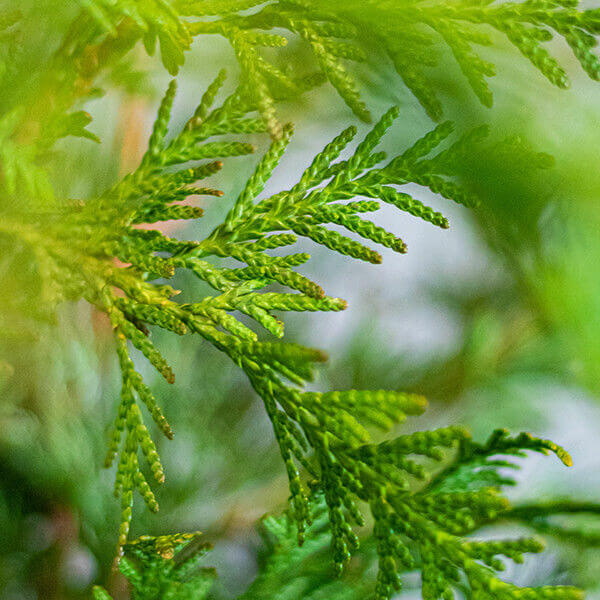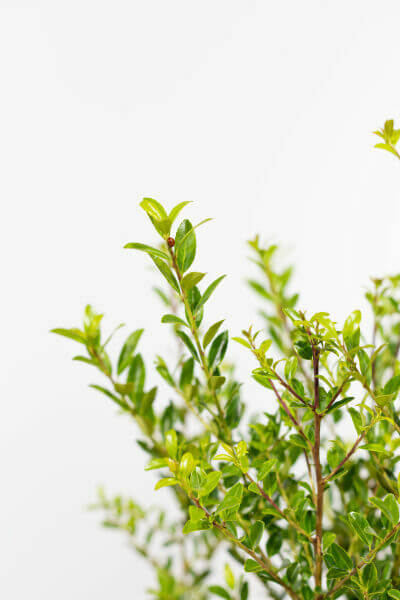Best Hedging Plants For Spring Flowers
Best Hedging Plants For Spring Flowers
Blog Article
Hedge Plants For Dense Screening
Boost your garden's attraction with rich hedge ranges such as Yew (Taxus), Thuja, Laurel, Photinia, and Bamboo, celebrated for their structural stability and environmental advantages.
Yew and Thuja provide evergreen coverage and winter resilience, while Laurel offers rapid development and broad, fragrant leaves.
Photinia adds seasonal appeal with its vibrant red foliage, and Bamboo provides a low-maintenance, serene ambiance.
These hedges enhance air quality, reduce sound, and develop tranquil, private areas.
Proper planting, spacing, and upkeep make sure vigorous growth and environmental consistency.
Explore how these rich varieties can raise your garden's appeal and well-being.
Key Takeaways
Transform Your Garden With Lush Hedge Ranges
- Select Yew for its thick, evergreen growth and exceptional longevity.
- Opt for Laurel for its fast growth and broad leaves, making sure fast privacy.
- Choose Photinia for its dynamic seasonal foliage, which turns a striking dark red.
- Use Bamboo for a low-maintenance, winter-hardy hedge with aesthetic appeal.
- Space plants 2-3 per meter and prune regularly for ideal growth and health.
Popular Hedge Plants
When changing a garden with lavish hedge ranges, it's vital to consider popular hedge plants such as Yew, Thuja, Laurel, and Photinia due to their distinct attributes and advantages.
Yew (Taxus) is highly esteemed for its longevity and thick, green development, making it a prime choice for withstanding landscapes.
Thuja is kept in mind for its evergreen foliage and robust winter season strength.
Photinia includes seasonal vibrancy with red leaves that darken with time, developing vibrant visual appeal.
Laurel provides quick growth and aromatic, broad leaves, ideal for fast personal privacy.
Additionally, Bamboo is an outstanding choice for atmosphere, offering a low-maintenance, winter-hardy alternative that boosts the garden's visual with its stylish, swaying canes.
These selections deal with a range of horticultural needs and choices.
Advantages of Garden Hedges
Garden hedges offer a multitude of advantages, making them a valuable addition to any landscape. These natural barriers are affordable to implement and offer considerable wind protection, boosting air flow and contributing to sound reduction. The thick foliage of hedges like Thuja and Beech guarantees personal privacy by obstructing presence, producing a serene and secluded environment.
Hedges also play a crucial function in microclimate regulation, offering a stable environment that promotes plant development and reduces temperature level changes. Their elaborate leaf structures filter toxins, improving air quality and adding to a much healthier garden ecosystem.
Additionally, hedges master sound decrease, absorbing and deflecting acoustic waves to lower ambient sound levels. This dual performance of offering both visual and acoustic personal privacy improves the total tranquility and aesthetic appeal of any garden.
Planting and Upkeep Tips
For an effective hedge, meticulous preparation of the planting area is essential. Ensure the soil has proper pH and drainage to support strong root advancement.
Space the plants properly for the chosen species. Water the hedge frequently during its preliminary development phase, changing as required with seasonal changes.
Implement a systematic pest control and disease prevention technique, using chemical or organic treatments when needed. Frequently check for aphids, mites, and fungal infections.
Apply mulch to maintain wetness and reduce weeds. Seasonal pruning promotes dense growth and air flow, important for plant health.
Following these guidelines will help you cultivate a lively, well-kept hedge that improves the charm of your garden.
Spacing and Cutting Guidelines
Spacing and Trimming Standards
Correct spacing and cutting are important for cultivating healthy, visually appealing hedges. Sufficient spacing makes sure each plant gets sufficient nutrients, light, and airflow.
Follow these standards for optimal hedge upkeep:
- Spacing: Position hedge plants 2-3 plants per meter to motivate robust growth.
- Pruning Techniques: Routine pruning is important for maintaining wanted hedge height and shape. Trim brand-new development in summertime and cut back older wood throughout winter.
- Seasonal Care: Change trimming approaches and schedules according to seasonal requirements to guarantee plant health.
- Hedge Height: Regularly screen and cut to preserve the desired hedge height and attain uniform visual appeals.
Sticking to these actions will ensure your hedge prospers, enhancing both the appeal and performance of your garden.
Choosing the Right Hedge
Selecting the Right Hedge
Picking the appropriate hedge includes examining factors such as fully grown height, foliage density, and environmental strength. Successful hedge plant choice needs understanding each species' development attributes and site-specific adaptability.
For example, Yew (Taxus) provides excellent longevity and dense development, while Thuja is notable for its winter strength. Additionally, considering maintenance requirements is important; fast-growing types like Laurel or Privet need routine trimming, whereas low-maintenance options like Bamboo or Ivy might be more effective for those seeking minimal upkeep.
Environmental elements such as soil type, light accessibility, and wetness conditions need to likewise guide the selection process. This careful approach ensures the chosen hedges will thrive, supplying both visual and practical advantages to the garden landscape.
Delivery and Planting Advice
To ensure your hedge plants flourish, they ought to be delivered by specialized couriers and planted quickly upon arrival.
Follow these important steps for successful planting:
- Soil Preparation: Enrich the soil with raw material to improve drain and nutrient material.
- Planting Depth: Produce a trench twice the width and equal to the depth of the root ball.
- Watering Strategies: Water thoroughly after planting, keeping the soil consistently moist however not saturated.
- Mulching: Apply a layer of mulch to maintain moisture and suppress weeds.
Customer Assistance and Service
Provided the essential function of timely support in horticultural pursuits, our consumer assistance group is available 6 days a week through telephone, e-mail, and social media to use expert guidance and quickly attend to any issues. Their devotion to fast action times makes sure consumer satisfaction by resolving questions connected to plant health, optimum planting techniques, and maintenance schedules.

Within 24 hr
Social Media
This extensive support system, strengthened by an outstanding 9.3/ 10 client score, highlights our commitment to enhancing the gardening experience for every customer.
Often Asked Questions
The Length Of Time Does It Take for Hedge Plants to Establish?
Hedge plants usually require one to three years hedge plants to become totally established, with the precise period varying by types and growing conditions.
Effective care during this important period is necessary for robust development. Consistent watering, alert weed control, and appropriate fertilizer application are critical in promoting strong root advancement.
For instance, fast-growing species like Laurel might develop quicker, while slower-growing ranges such as Yew may take longer. Diligent upkeep speeds up the facility process, resulting in healthy and thick hedges.
What Are the very best Hedge Plants for Personal Privacy?
The question of the very best hedge plants for personal privacy includes assessing evergreen and deciduous alternatives.
Evergreen hedges like Thuja, Laurel, and Cypress provide year-round coverage, guaranteeing constant privacy.
In contrast, deciduous hedges such as Beech provide seasonal personal privacy, shedding leaves in cooler months.
Key maintenance suggestions for personal privacy hedges consist of routine cutting, fertilizing in spring, and correct spacing-- typically 2 to 3 plants per meter.
Additionally, consistent watering and thorough weed elimination are vital for promoting healthy, thick development.
Can Hedge Plants Bring In Wildlife to My Garden?
Yes, hedge plants can bring in wildlife to your garden by supplying vital advantages like shelter, food, and nesting websites, consequently improving local biodiversity. Yew, holly, and laurel are outstanding for drawing in birds, while ivy supports a variety of insects.
Nevertheless, it's crucial to note that there are some drawbacks, such as increased maintenance to handle insects and regular maintenance. Thoroughly choosing and maintaining hedge ranges can assist balance these disadvantages and benefits, eventually promoting a sustainable and lively ecosystem in your garden.
Exist Any Flowering Hedge Plants Available?
Yes, there are flowering hedge plants available that can enhance the appeal of your garden.
For instance, Elaeagnus, also referred to as Olive Willow, produces aromatic white flowers in the fall, adding a touch of sophistication.
Photinia, another popular option, showcases dynamic red leaves that mature into an abundant green, producing a dynamic visual impact throughout the seasons.
To ensure these plants prosper, it's important to practice correct pruning methods and seasonal upkeep, such as trimming brand-new growth in the summertime and cutting back in the winter.
These procedures will help preserve the health and visual appeal of your flowering hedges.
How Do I Prevent Pests in My Hedge Plants?
To prevent bugs in hedge plants, use natural insect control techniques and keep proper hedge care. Introduce helpful insects like ladybugs, which victimize damaging pests, to produce a well balanced environment.
Regularly check your hedges for signs of problem and quickly get rid of any afflicted parts to avoid the spread. Guarantee the health of your hedges by applying balanced fertilizers and supplying appropriate water.
Utilize mulching to retain soil moisture and correct spacing to decrease plant tension and promote robust growth. These practices jointly help in decreasing pest problems and preserving a healthy hedge.
Conclusion
In essence, picking the ideal hedge ranges such as Yew, Thuja, and Laurel can change any garden into a relaxing sanctuary. These plants offer year-round greenery, improve aesthetic appeal, and offer useful benefits like sound reduction and wind protection.
Appropriate planting methods, accurate spacing, consistent watering, and seasonal cutting are essential for optimum growth.
Reliable shipment services and professional client support make sure a seamless experience from purchase to planting, making it simpler than ever to raise your outside space.
Garden hedges use a multitude of advantages, making them a valuable addition to any landscape. These natural barriers are affordable to carry out and offer significant wind defense, improving air circulation and contributing to sound reduction. The thick foliage of hedges like Thuja and Beech ensures personal privacy by obstructing presence, producing a secluded and peaceful environment.

Pruning Strategies: Routine pruning is necessary for keeping preferred hedge height and shape. Trim new growth in summer season and cut back older wood throughout winter season.
Report this page